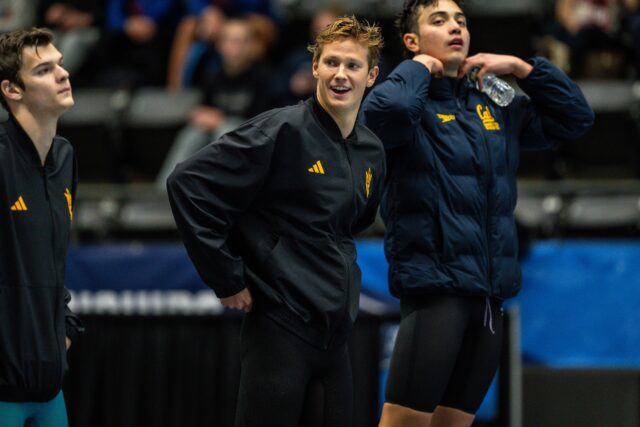
Detroit Lions ST coordinator Dave Fipp had a lot of thoughts on the new kickoff and revealed some strategies they’re considering.
The Detroit Lions are very much still in the exploratory phase when it comes to the NFL’s new kickoff rules, but special teams coordinator Dave Fipp is giddy thinking of all the possibilities for the team.
“We’re trying to experiment as much as we can, obviously. And putting our guys in a bunch of situations, both in schemes, positionally on the field, alignments, how we’re trying to play the play, mindset, mentality of it,” Fipp said. “Kind of all of the above and just trying to figure out a lot of things. Every time we do a drill, we do it a little bit differently and with different guys in different places.”
As a reminder, the new kickoff is very similar to the one employed by the XFL last season. Here are the key points of the new kickoff rule:
- Everyone but the kicker on the kickoff team must be lined up at the opponent’s 40-yard line
- At least nine players on returning team must be lined up between their own 30 and 35-yard line (seven of which have to be on the 35-yard line)
- No one but the kicker and returners are permitted to move until the ball is caught or hits the ground
- A traditional touchback (that reaches the end zone before hitting the ground) results in the ball being placed at the 30-yard line
There are other nuances to the rule, but those are the basics. (You can see a full official breakdown here.)
While the Lions are still exploring and keeping a lot of their strategy close to the vest, Fipp did reveal some strategies they’ve thought about over the course of the past few months.
First, it starts with personnel. With the old kickoff, long-distance speed was valued, seeing as the coverage team would have to run the length of the field, and the returners would have a good 20 yards of empty field in front of them when they received the ball. Now, Fipp believes short-area quickness will be more important.
“It’s become more of a short area play,” Fipp explained. “You got a guy lined up 5 yards across from you—you might settle a little bit and make it 7—but you’re trying to beat a guy in a 7-yard space. And so, I think it is a little bit more quickness oriented, both in the coverage game and the return game. I think guys abilities to flip their hips—kind of similar to the secondary-type guys—flip their hips, match guys in the return game is going to be important.”
Kickoff rules also require the coverage and return teams to be spread out horizontally on the field. In other words, teams can’t overload one side with an imbalance of players. AS a result, Fipp noted how a directional kickoff may not be a wise decision, as it could take some of your own players essentially out of the play.
“They’ve spread the field with our alignment so that it’s hard to get an overloaded number of players at the point of attack,” Fipp said. “If you kick the ball way into the left corner, there’s a couple guys out there that are 50-whatever, 50 yards away from the ball, laterally, and it just takes too long to get over the top of the ball, so some of those guys can’t show up.”
Fipp also made an interesting observation from the XFL play that was clearly discussed by the competition committee. In the XFL, you were only permitted to have a single player outside the “Setup Zone” to be a potential returner. The NFL changed that to two potential returners, because some kickers in the XFL were able to line-drive a kick away from the single returer and have it bounce through the end zone for a touchback at the 20. Kicks that land in the “Landing Zone” (between goal line and 20-yard line) and bounce through the end zone are placed at the 20 rather than the 30 for a kick that lands in the end zone.
Though he doesn’t say it outright, it sounds like Fipp is intending to utilize both players as potential returners to avoid that.
“The XFL, they had one returner back there deep. They could only have one guy,” Fipp explained. “We felt like teams were just going to try and put the ball on the ground—which I think they’ll still try to do (in the NFL) in some way—but at least we can have two guys back there. So that will talk some teams out of that stuff.”
Fipp also intimated that the team will not be afraid to utilize players who commonly play on offense or defense on the new kickoff. The Lions already did that a fair share anyways, but now with more stakes on the kickoff—and less room to run—Fipp believes that it’ll be hard to keep their most talented players off the field.
“Really, it’s your first defensive play, and it’s not any harder,” Fipp said. “There’s always this, ‘Well, the guy’s playing on defense, he shouldn’t be on special teams.’ Well, hey, you want the ball at the 25 or do you want the ball at the 40? The bottom line is no one is running more than 15-20 yards on a play, so it’s really not that taxing. It’s probably less taxing than a defensive play.”
All of this said, Fipp was quick to point out that they’re still collecting data. They have not committed to one strategy or one philosophy when it comes to the new kickoff. The spring and summer—and probably even the early parts of the regular season—will be spent evaluating and adjusting.
“Right now we’re probably more so collecting information and not necessarily having a strong opinion one way or the other and just seeing where it takes us.”

















You must be logged in to post a comment Login